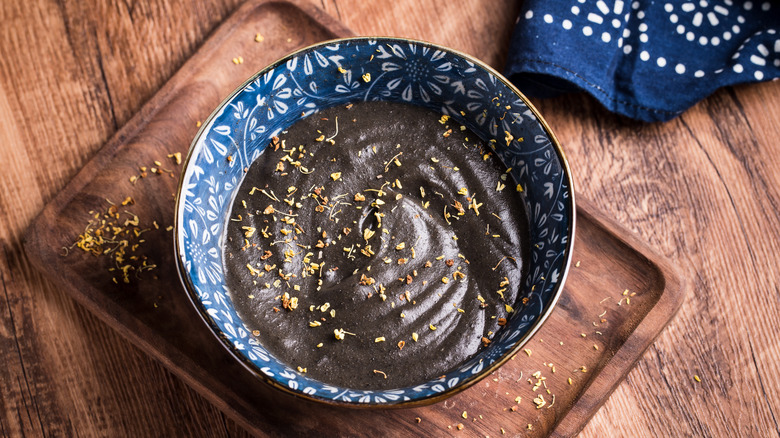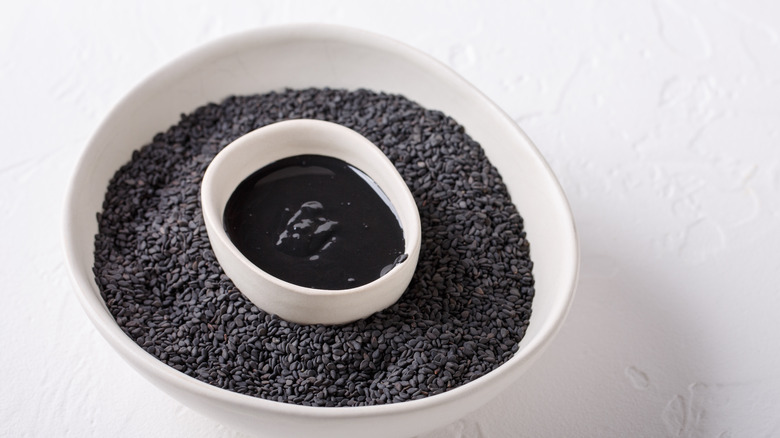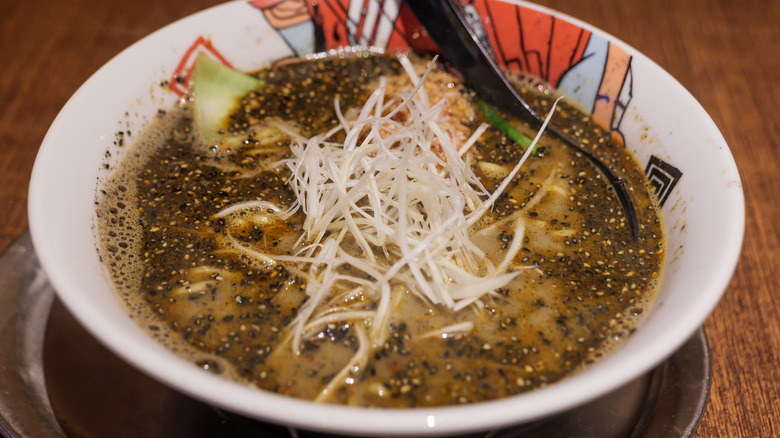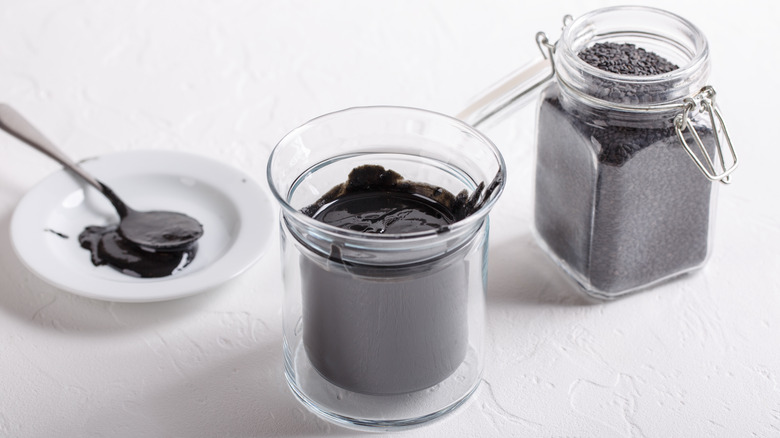Why You Should Have Black Sesame Paste In Your Pantry
Black sesame seeds aren't used too regularly in western cuisine, and as a result, we may not think of the ingredient other than as a condiment for salads, a topping for baked goods, or as one of the ingredients for a seared tuna crust. But black sesame has the potential to be so much more. As King Arthur Baking's Myo Quinn points out: "Black sesame seeds have a stronger aroma [than white], so they're great in desserts," though, not in seed form, but ground to a smooth paste and sweetened.
Described as having a nutty, earthy flavor with bitter undertones, black sesame paste is a popular ingredient in Japanese, Chinese, and Korean cuisines. Adding sugar or honey tames black sesame's bitter aftertaste, making it a sought-after ingredient for cakes, ice creams, or a filling for sticky rice dumplings. Black sesame paste can even be consumed in the same way as peanut butter, spread over sandwiches. While these days it's not much of a chore to get a jar of sesame paste online or from specialty stores, some prefer to make it at home.
How to make black sesame paste at home
Black sesame paste can be made in two ways. The traditional Japanese way is by using a suribachi and surikogi (mortar and pestle), but a food processor is definitely the more expedient option. In either case, before the seeds are ground, they should be well-toasted in a pan over medium heat until their aromatic oils are released. Once they have cooled down, the seeds' preparation differs whether you're planning to use them for sweet or savory applications.
For a sweet ingredient, combine a half cup of toasted black seeds and between two to four tablespoons of honey — the amount of honey will determine how viscous the paste becomes. (If you want a vegan version, swap out honey for maple or agave syrup). And for a savory ingredient, simply pulverize the seeds with just a tablespoon of roasted sesame oil rather than the liquid sweetener.
Cooking with black sesame paste
There are few limits on what you can do with this rich, nutty seed with a slightly bitter taste. Fans enjoy sweetened black sesame paste as a sandwich filling, or as an ice cream topping or flavoring as in these black sesame ice cream sandwiches. The Japanese also enjoy using black sesame paste as a flavoring when they cook up puddings, breads, and cakes, or as fillings for mochi. In Chinese cooking, black sesame paste is commonly used to sweeten soups, as a filling for steamed Chinese buns, and for the glutinous rice flour dumplings known as tang yuan.
Let's not leave out black sesame paste's many savory applications. The Japanese use the paste as a condiment or dip for meats and vegetables that are cooked up in a hotpot, or mix it into broth to make a Japanese-flavored version of dan dan noodles, which they call Kurogoma Tan Tan Men. Black sesame paste can be used to make a salad dressing, and Koreans use the ingredient to make the cold-weather porridge treat heugimja juk.
Buying and storing black sesame paste
As we mentioned, black sesame paste can be found on- and offline through Amazon and from Asian markets. If you're having any trouble in your search, know they can be found under the names kuro neri goma in Japanese, heugimja in Korean, and hei zhima xian in Chinese. Some pastes, like the ones from Yun Hai, are even made the old fashioned way — stone ground. Some say the modern method of blade grinding can alter the taste as it heats the paste as its mixed.
Some artisanal sesame pastes can even be made with no preservatives, so when you're storing the product, heed the "use by" dates as specified by the manufacturer. Because it contains lots of oil, black sesame paste needs to be refrigerated or it could go rancid. If you want to extend its shelf life, black sesame paste can be stored in the freezer, where it will keep for up to six months.



